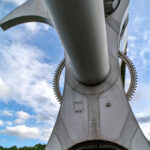A visit to a few Castles in Scotland

This part of the interior of Bothwell Castle.
- Many Castles of Scotland are in ruins but some are still in use as places for offices. homes, or open to tourists.
There is history that comes alive as we wonder through the ruins. Urquhart is known because of its location on Loch Ness, and the Loch Ness monster. Scone Palace is well preserved and the world famous crowning place of the King of Scots. It is one of the finest examples of late Georgian Gothic style in the UK. It is an interesting hike to the Dunnottar Castle, a ruined medieval fortress possibly fortified in the Early Middle Ages.
Sterling Castle, sitting atop Castle Hill is one of the largest and most important castles in Scotland, both historically and architecturally. Traquair House, the oldest continually inhabited house in Scotland. It was visited by 27 Scottish Kings and Queens and has been lived in by the Stuart family since 1491. Mount Stuart Castle is a sumptuous 19th-century mansion, with extravagant interiors and expansive landscaping and wild gardens. Kilchurn Castle was built in the mid 1400s on the northeastern end of Loch Awe. The ruins can be visited and the reflection on the Loch is beautiful. Explore Eilean Donan, a 13th Century Castle in the Highlands of Scotland and one of the most iconic images of Scotland. Inverness Castle sits on a cliff overlooking the River Ness in Inverness. A fortification has existed here since at least the sixth century, and rebuilt, added on to, finally rebuilt to house the Sheriff Courthouse and Country Hall. It remains in use as a court and therefore, at this time, access is limited to the exterior.

Scone Palace 
Urquhart Castle 
Urquhart Castle 
Urquhart Castle 
Traquair Hpuse 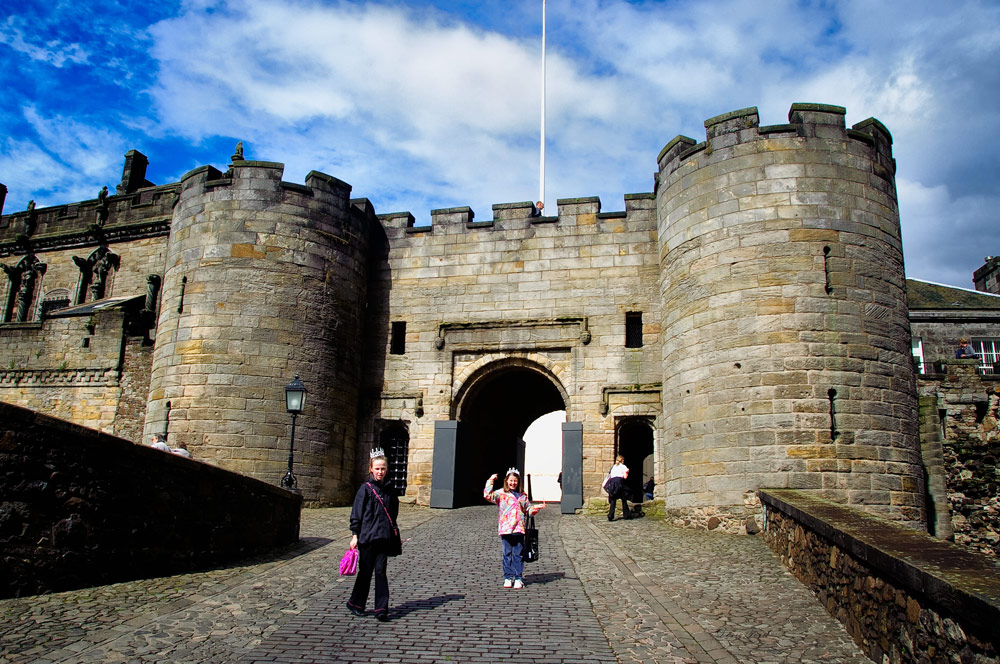
Sterling Castle 
Robert the Bruce Monument 
Sterling Castle 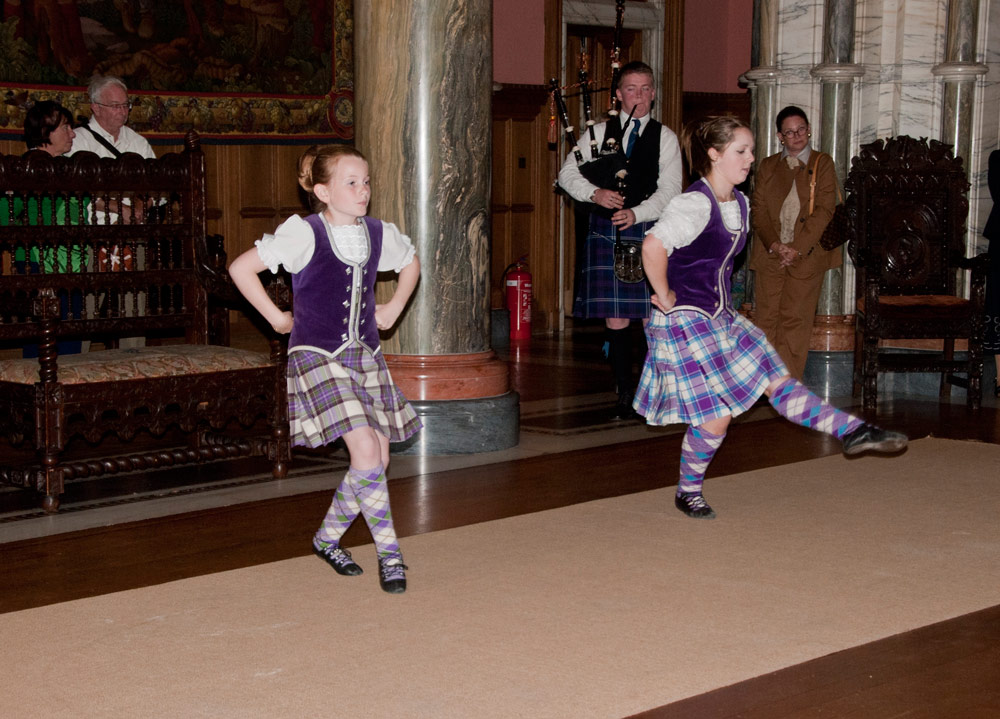
Scottish Dancers Mount Stuart 
Mount Stuart House 
Kilchurn Castle 
Kilchurn Castle 
Inverness Castle 
Inverness Castle Loch side 
Inveraray Castle 
Glamis Castle 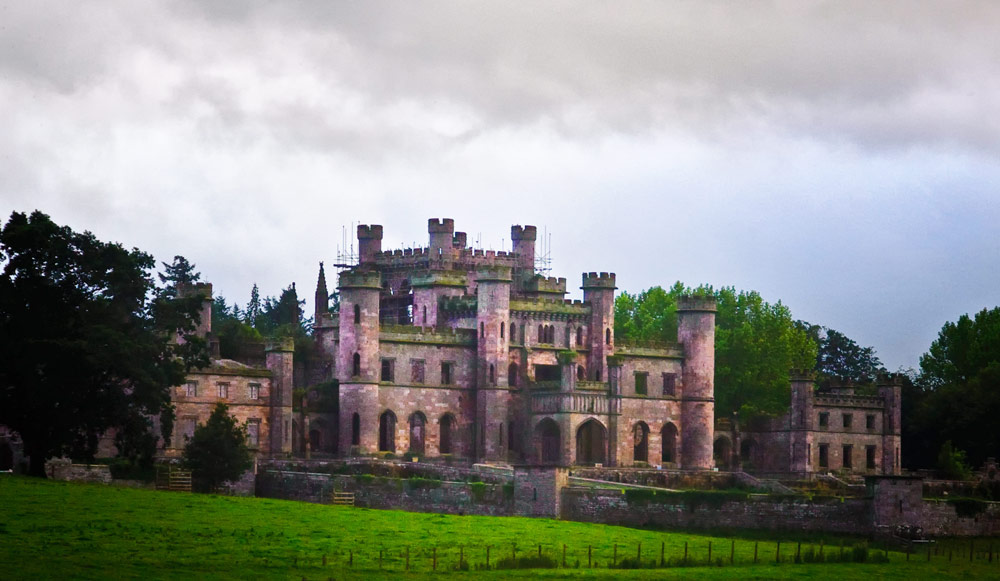
Lowther Castle England 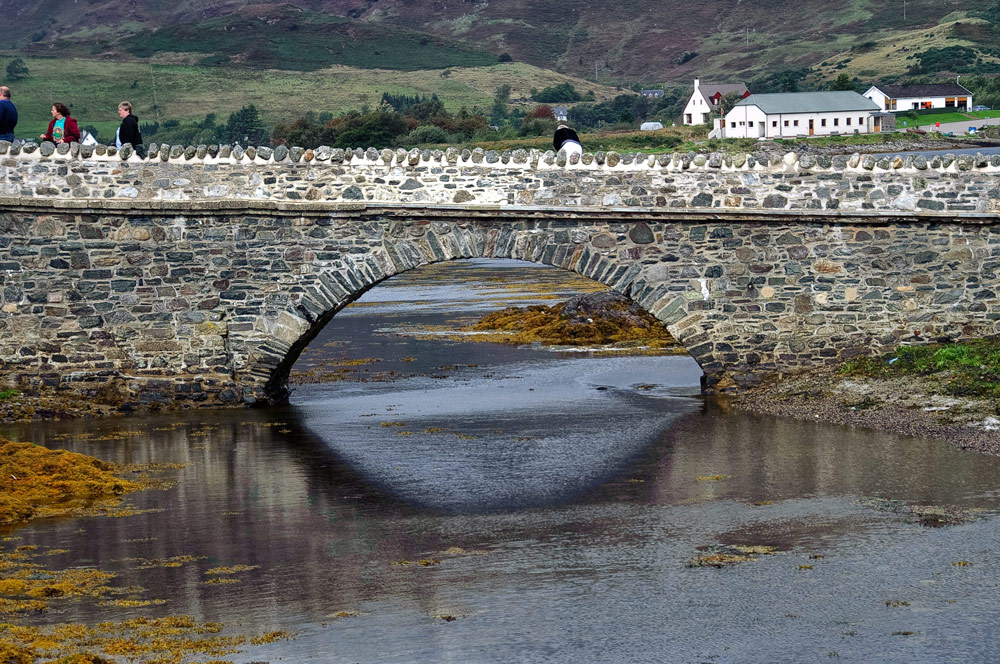
Eilean Donan bridge 
Eilean Donan 
Edinburgh Tattoo 
Edinburgh Castle 
Dunstsaffnage Castle 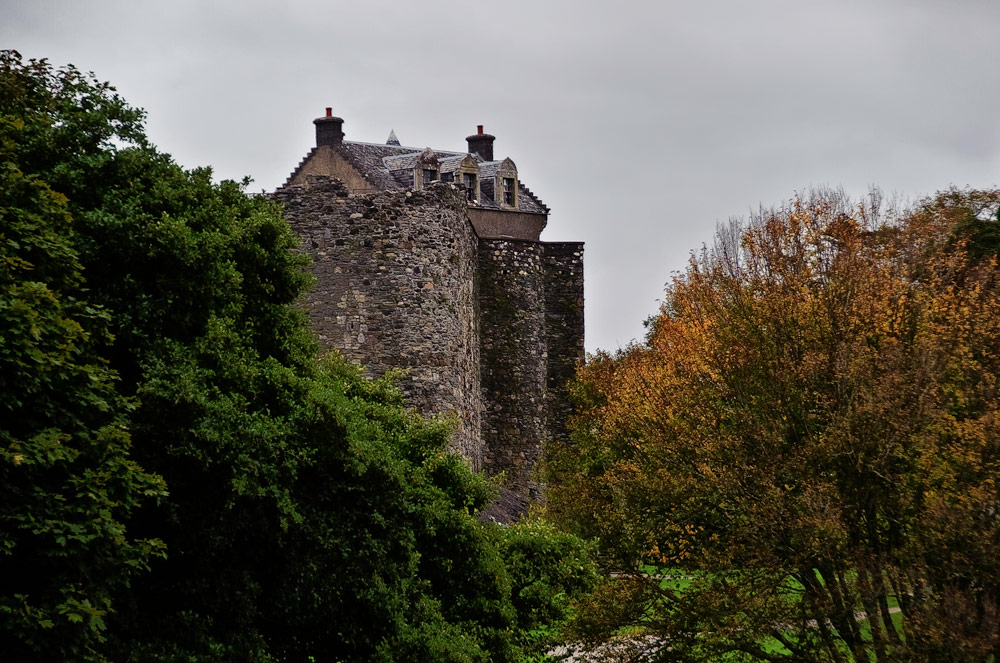
Dunstsaffnage Castle 
Dunnottar Castle 
Dunnottar Castle 
Dunnottar Castle 
Dunollie Castle 
Duart Castle 
Drum Castle 
Drum Castle 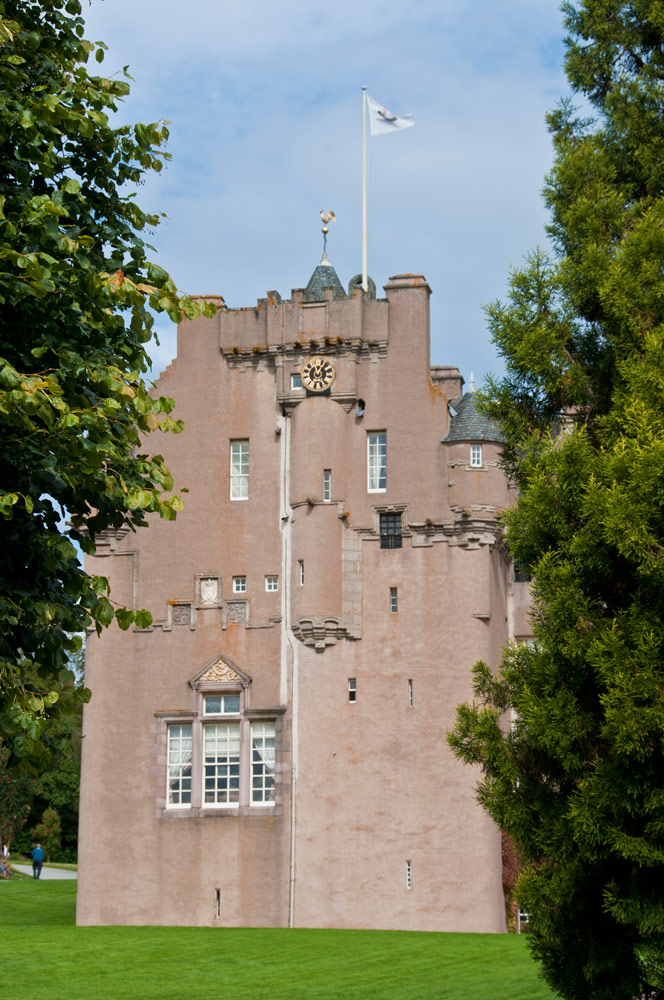
Crathes Casstle 
Crathes-Castle 
Crainethan Castle 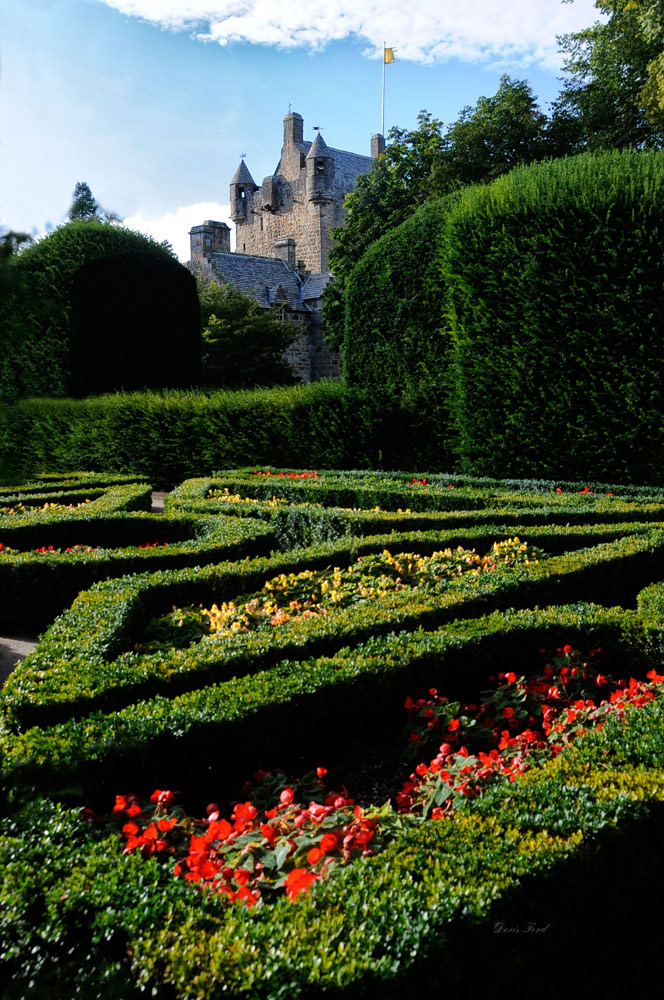
Cawdor Castle Gardens 
Cawdor Castle 
Castle-Stalker 
Caerlaverock Castle 
Bothwell Castle 

Barcaldine Castle 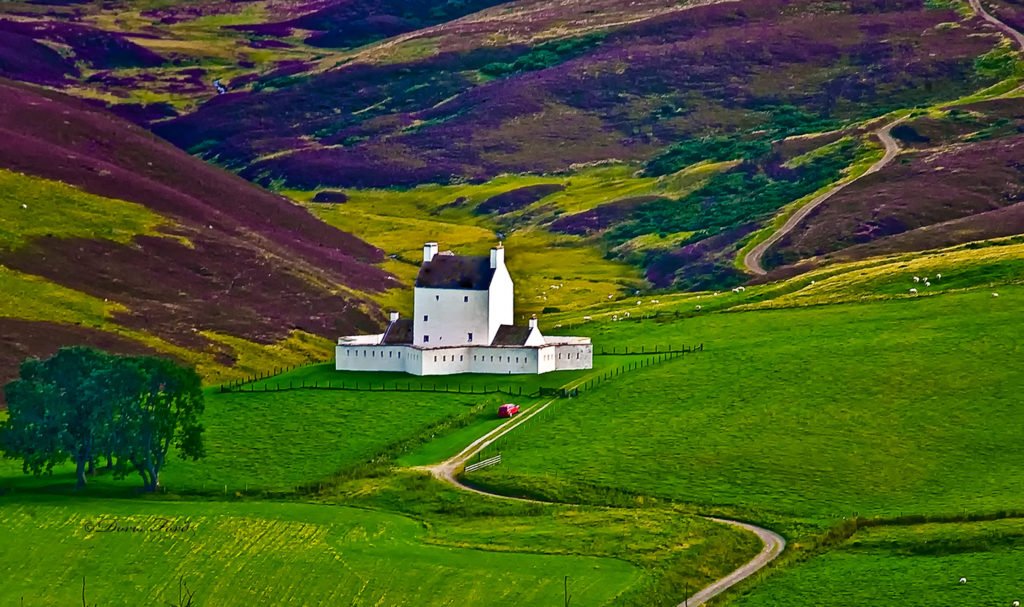
Corgraff Castle Scotland Highlands
Barcaldine Castle is a 17th century tower house and is now a luxury Bed and Breakfast Guest House. Corgarff Castle was built in 1550 then converted to a barracks for government troops in 1748. It is still complete with its 18th star-shaped fortification and sits surrounded by heather covered hills.
Caerlaverock Castle is a moated triangular castle first built in the 13th Century. It was once caught up in bloody border conflicts but now a popular filming location. Dunollie Castle is a small ruined castle now covered by greenery, but open to the public for tours. Dunstaffnage Castle built in 1220s is a partially ruined castle near Oban, and is surrounded on three sides by the sea. Crathes Castle cared for the National Trust for Scotland is a classic Tower house whose interior and gardens can be toured and enjoyed. Nearby Drum Castle is one of Scotland’s oldest tower houses also cared for by the National Trust while touring one can explore 700 years of history. Craignethan Castle is another ruined castle with a tower built in the 16th century. The last medieval castle to be built in Scotland. Cawdor Castle, a romantic Highland Castle is set amid beautiful formal gardens originally built around a 15th century tower house.
Castle Stalker is a privately owned 14th century four-story tower house located on a small patch of land on Loch Laich. It is very picturesque when viewed from the road, and one can kayak to get closer to walk around the tower, and request a guided tour. Bothwell Castle, the largest and finest 13th century stone castle much fought over during the Wars of Independence with England. even though it sustained much damage it still continues to be one of the most spectacular pieces of medieval architecture across the whole of Scotland. 13th Century Duart Castle is located on the Isle of Mull, restored and open for tours, beautiful tea room and spectacular location for weddings. Glamis Castle is beautiful, a living, breathing monument to Scottish heritage, hospitality and enjoyment for all. It was the inspiration for Shakespeare’s Macbeth, the childhood home of HM Queen Elizabeth the Queen Mother and birthplace of HRH Princess Margaret. Inveraray Castle is a beautiful stately home and an early example of Gothic Revival architecture. Accommodation is available, and an episode of Downton Abby was partly filmed there. Edinburgh Castle is an historic fortress which dominates the skyline of Edinburgh was once the residence of Scottish monarch and now serves mostly as a museum. The Royal Military Tattoo is an annual series of military tattoos performed by British Armed Forces, Commonwealth and international military bands and artistic performance teams on the esplanade of Edinburgh Castle.
www.visitscotland.com
https://www.historic-uk.com/HistoryMagazine/DestinationsUK/CastlesinScotland/
https://www.visitscotland.com/see-do/attractions/castles/great-scottish-castles/

















